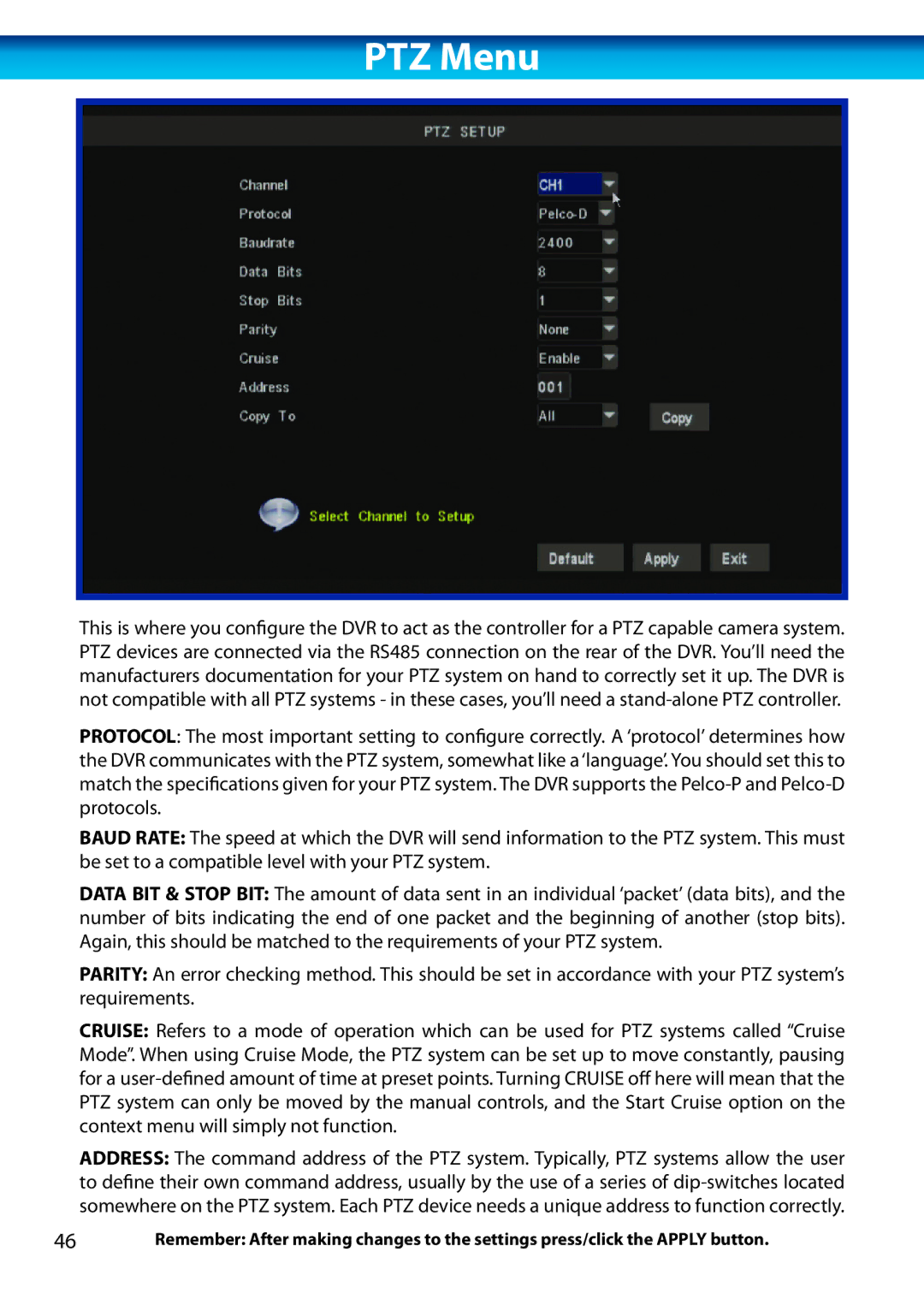
PTZ Menu
This is where you configure the DVR to act as the controller for a PTZ capable camera system. PTZ devices are connected via the RS485 connection on the rear of the DVR. You’ll need the manufacturers documentation for your PTZ system on hand to correctly set it up. The DVR is not compatible with all PTZ systems - in these cases, you’ll need a
PROTOCOL: The most important setting to configure correctly. A ‘protocol’ determines how the DVR communicates with the PTZ system, somewhat like a ‘language’. You should set this to match the specifications given for your PTZ system. The DVR supports the
BAUD RATE: The speed at which the DVR will send information to the PTZ system. This must be set to a compatible level with your PTZ system.
DATA BIT & STOP BIT: The amount of data sent in an individual ‘packet’ (data bits), and the number of bits indicating the end of one packet and the beginning of another (stop bits). Again, this should be matched to the requirements of your PTZ system.
PARITY: An error checking method. This should be set in accordance with your PTZ system’s requirements.
CRUISE: Refers to a mode of operation which can be used for PTZ systems called “Cruise Mode”. When using Cruise Mode, the PTZ system can be set up to move constantly, pausing for a
ADDRESS: The command address of the PTZ system. Typically, PTZ systems allow the user to define their own command address, usually by the use of a series of
46Remember: After making changes to the settings press/click the APPLY button.
